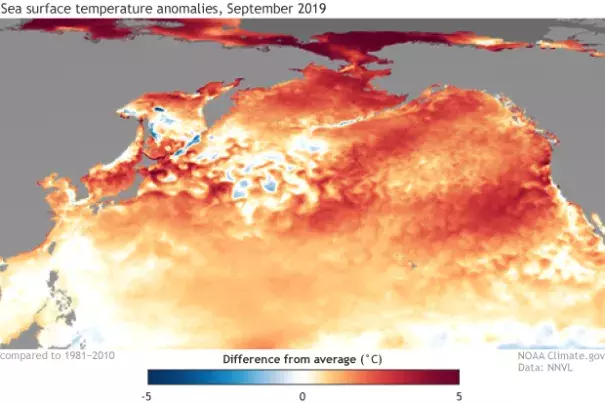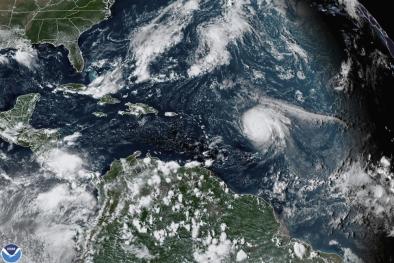Seeing Red Across the North Pacific Ocean

Q: There are research studies that indicate that that marine heatwaves will become more frequent with climate change. How certain is this? Could there be a human-caused thumbprint in recent events?
Alexander: Most of the ocean has warmed over the past 50 years. This warming is projected to continue through the 21st century, especially off the northeast US coast. Nearly all computer model simulations of the future indicate the oceans will warm. So relative to the present, marine heatwaves will become more frequent. However, if one thinks of a heatwave as a short-term event relative to the mean temperature at that time, the frequency of marine heat could stay about the same but just happen in an overall warmer climate.
Jacox: What those studies show is that in a warming ocean, historical temperature thresholds will be exceeded more often. In other words, temperatures we currently consider extreme will become more common. But that doesn’t mean marine heatwaves will necessarily change. One could think of it like sea level rise – just because the water gets higher doesn’t mean the waves are getting bigger. How marine heatwaves will change relative to the increasingly warmer temperatures is still an open question, and the answer will likely be different in different parts of the ocean. For marine species, both the warmer temperature and future marine heatwaves will be important. Their relative and combined impacts will vary among species depending on their exposure to warmer temperatures, their sensitivities, and their adaptive capacity.
Related Content




